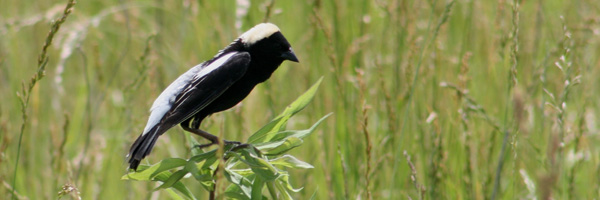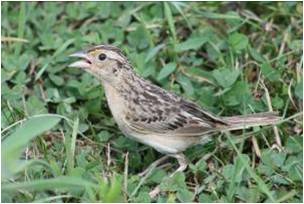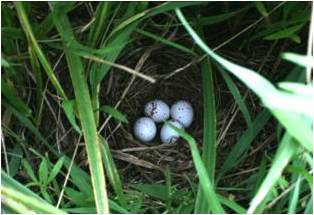
ECOLOGY & CONSERVATION BIOLOGY
IN THE MILLER LAB

ECOLOGY & CONSERVATION BIOLOGY
IN THE MILLER LAB
Contact: Torre Hovick


Count data are useful in assessing habitat use by birds, but may not be always be an accurate indicator of habitat quality. This is true, for example, if a given area is serving as a population sink or ecological trap. For this reason, we wished to supplement our survey data in the Grand River Grasslands with detailed nesting studies. We selected the Grasshopper Sparrow (Ammodramus savannarum) as a focal species because it is a grassland obligate and is relatively abundant in southern Iowa, despite experiencing steep declines throughout much of its range over the last few decades. In 2008 and 2009, we located and monitored 327 nests in pastures that were grazed or patch-burn grazed. Constant daily survival rates were greater in patch-burn grazed pastures than in grazed-and-burned pastures; nest survival rates for both treatments were low. Competitive survival models included year, stage of nest, nest age, and cool-season grass abundance within five meters of the nest. Overall, cool-season grass abundance had the greatest effect on survival and had a negative influence.
Supplementing measures of nest success with data on postfledging habitat use and survival may provide a highly robust measure of habitat quality. The postfledging period is the time when grassland birds learn to fly, feed on their own, and hide from predators. Birds also experience extremely high mortality rates during this stage. We attached radio transmitters to 50 Grasshopper Sparrow nestlings from 50 separate broods in 2009 and modeled survival in response to climatic, biological, and ecological variables. There was no effect of treatment on survival. The factor most influencing postfledging survival was age; all other variables were non-significant. The majority of chicks (74%) died within three days of radio-transmitter attachment. We attributed most mortality to mesopredators (48%) and exposure (28%).
Funding: Iowa Department of Natural Resources